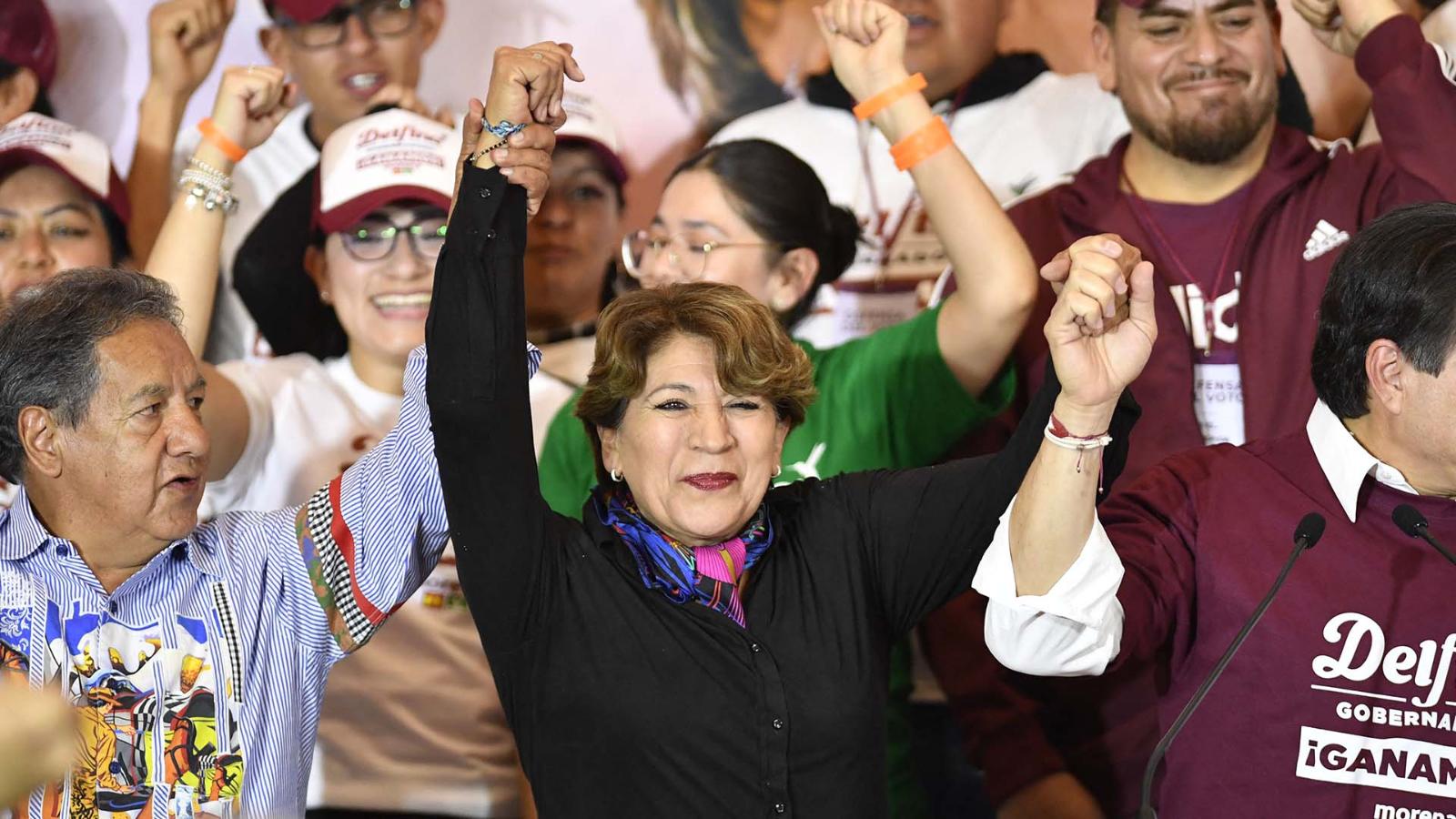(CNN Spanish) – The National Electoral Institute of Mexico has announced the first results of the local elections for the state of Mexico and Coahuila that took place on Sunday 4 June. Elections in the first term elected a governor, and in the second, a governor and deputies.
The latest estimates published by the National Institute of Statistics put candidate Delfina Gómez in first place, for the Together We Make History Coalition in the State of Mexico (PVEM, PT and MORENA), with 52.1%-54.2% of the vote.
He was followed by Paulina del Moral of the Va por el Estado de México coalition (PAN, PRI, PRD and NAEM) with 43%-45.2%.
Citizen participation in this estimate ranged from 48.7%-50.2%, with just over 12 million people involved.
Meanwhile, in Coahuila, the estimates correspond, at a confidence level of 95%, with the votes counted at 8:25 p.m. local time this Sunday, and give preference to Manolo Jimenez Salinas, and Alianza Ciudadana por la Seguridad (PAN, PRI, PRD) by 55.7% -58.2%.
Importance of elections in the state of Mexico
This election is not only seen as a government process, but as a thermometer of potential voter preferences towards the 2024 presidential election.
The state of Mexico is the federal entity with the largest population in the country, 16.9 million, according to 2020 figures from the National Institute of Statistics and Geography (INEGI). With an electoral roll of 12.6 million, the weight of votes in the state of Mexico is significant.
To put it into perspective, this is roughly equivalent to the total population of El Salvador and Nicaragua combined.
“It represents 60% of the electoral register of all of Central America,” explained Bernardo Barranco, “and it is also an electoral list that is equivalent to Chile and is larger than Uruguay and Paraguay combined. We are talking about a very large block of votes.” Political analyst and former electoral advisor for the state of Mexico.
Delfina Gómez (R), the candidate for governor of the state of Mexico for a coalition led by the ruling political party Morena, informally celebrates her election as governor of the state of Mexico in Toluca, state of Mexico, on June 4, 2023. (Photo by Claudio Cruz/AFP via Getty Images)
Because of its electoral size, the state of Mexico is also a key space for measuring the strength of parties. “It is the main fold of votes at the national level, both for the Constitutional Revolutionary Party and the People’s Party of India. Here they have the highest number of votes nationally. For Morena, here they are also first or second in number of votes nationally,” explains Professor Juan. Carlos Villarreal Martinez, from the Autonomous University of Mexico State.
For this reason, analysts believe that what happens in the elections in the state of Mexico could be a laboratory for the 2024 presidential election.
“This percentage (from the state of Mexico) could be a final orientation before the 24th election, which is a presidential election,” says Barranco.
“Whoever intends to achieve a good result in next year’s elections must win the state of Mexico with a yes or a yes. In the case of Morena, she will not only reach 23 states, but will govern more than 60% of the nominal list,” says academic Villarreal. Por El Estado de Mexico, winning is vital to reach better conditions for the competition in 2024.”

“Music buff. Social media lover. Web specialist. Analyst. Organizer. Travel trailblazer.”







More Stories
Nicaragua picks up and delivers to El Salvador four subjects circulated by Interpol
UN experts have warned of serious human rights violations in the context of the presidential elections scheduled for July 28 in Venezuela.
The Organization of American States deploys observers for the US elections